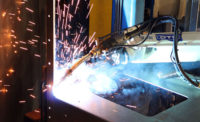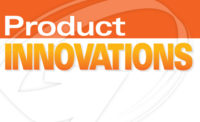Metal stamping manufacturing processes can quickly and cleanly create solid metal parts for a wide range of needs and industries. Small metal parts make up some of the most important pieces when creating larger scale items for the following industries:
- Automotive
- Construction
- Consumer
- Computer
- Medical
- Mining
- Military
Manufacturing is increasingly benefitting from end to end automation and new technologies. Electromagnetic assisted tools can make more intricate, complex forms, reduce human error, and reduce material waste. Tests throughout every phase of the measurement process ensures that all metal stamping parts are created to the highest possible standard.
Utility benefits more than the bottom line
Metal stamping excellence requires a high degree of engineering using raw materials. Wasted metal represents the amount of raw material that wasn’t maximized on the job, but it also represents many other ways workers can injure themselves while handling the excess material.
Avoiding common injuries with metal scrap
While strains, sprains, cuts, and lacerations are the most common injuries to occur while workers transport scrap metal, other illnesses include respiratory illness from the scrap chemicals or getting hit by the large equipment used to move or transport this scrap.
Most injuries are preventable, and managers must consider how the safety of handling scrap impacts business in more ways than one. Safe work practices are just as essential when handling the excess materials as they are when creating the product itself.
Safe work practices for metal scrap management
Training and education including proper safety practices and precautions can reduce workplace accidents regarding moving, handling, and storage of scrap metal. Employees must know what it’s like to move scrap metal while being mindful of potential hazards.
- Dangers of lifting large quantities of scrap metal
- Avoiding stress on the body that is not necessary
- Using equipment properly and safely
- Proper use of PPE to avoid metal particles
- Adhering to policies designed to prevent health and safety hazards
It is every employer’s responsibility to provide safe and healthy working conditions for employees. When employees operating well under a consistent health and safety management system, productivity and employee satisfaction increases, and overall quality assurance incidents and incidents requiring workers compensation go down.
When choosing a metal stamping services provider, check the total customer satisfaction on quality and on-time delivery, but also conviser the efficiency and management of total scrap metal. When not recycled, scrap metal is considered hazardous waste and contributes to landfills across the country.
Ideally, there will be very little metal scrap left over for recycling, transport, or disposal due to well managed production chains. However, it’s also important to consider safety standards when pieces must be cut for ease of handling in the disposal process.
Torch cutting and heat considerations
Protect the eyes and face from flying sparks and UV/IR light. Dark goggles and face shields are imperative.
Mechanical cutting using heavy-duty machinery
Whether employees are using saws or presses, some type of barrier must keep the workers’ bodies from coming into direct contact with the machine.
Depending on the type of scrap metal or if the metal was prepainted, employees need ample fresh air and ventilation to avoid hazardous fumes.
Quality performance goes beyond the processes and equipment and affects the output quality of numerous industries down the line. All aspects of safety must be considered in the metal stamping manufacturing process including the waste products generated and keeping employees safe during the breakdown and transport of these raw material byproducts.



